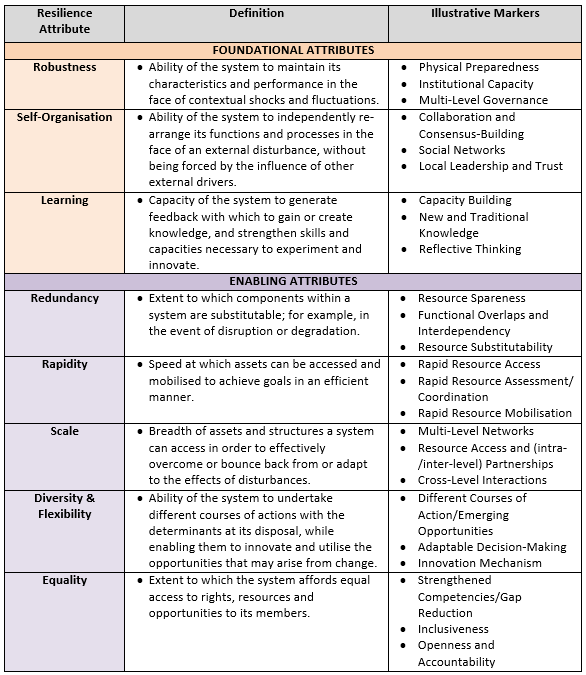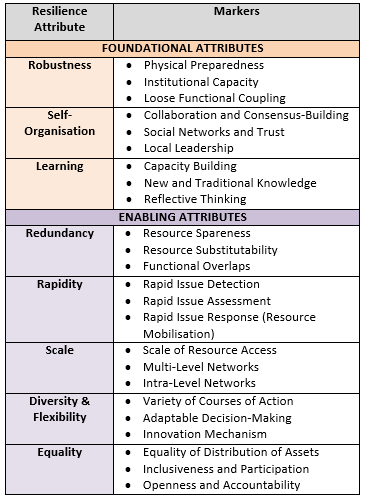How can we measure resilience?
This is a perennial challenge for those working on resilience, and one we have faced in the field in implementing RABIT; the Resilience Assessment Benchmarking and Impact Toolkit.
Precursor challenges are first to define and conceptualise resilience. With minor variations, definitions are often very similar to that used for RABIT: “the ability of a system to withstand, recover from and adapt to short-term shocks and longer-term change”. But RABIT’s unique conceptualisation is to understand resilience as a set of foundational (robustness, self-organisation, learning) and enabling (redundancy, rapidity, scale, diversity, flexibility, equality) system attributes. (For further details, see the journal paper, “Conceptualising the Link Between Information Systems and Resilience: A Developing Country Field Study”.)
To measure resilience, we identified three markers for each of the attributes, derived from prior literature and as shown in Table 1.
Table 1. Resilience Attributes and Illustrative Markers

We then took this model into the field, applying it in an urban community in Costa Rica’s capital, San Jose. We used the model to benchmark both the general resilience of the community and also its “e-resilience”; that is, the impact of digital technologies on wider resilience.
Details of findings can, again, be found in the associated journal paper, but the focus here will be what we learned about the markers we had used to measure resilience. We found a number of problems in practice:
- There were overlaps: for example, multi-level networks and cross-level interactions under scale, and multi-level governance under robustness might have potential differences but they appeared in practice to be very similar.
- There were gaps: for example, the markers for rapidity were narrowly conceived around resources and as a result, did not adequately reflect the need for a fast-acting detection-assessment-response sub-system.
- There were some misallocations: for example, trust belonged with social networks rather than with leadership; and interdependency of system functions related to robustness rather than redundancy.
- There were over-broad combinations: where rather different characteristics were combined into a single marker; often leading to only one of them being operationalised. For example, “resource access and (intra-/inter-level) partnerships” was only operationalised as “intra-level partnerships”.
Putting all these findings from the field study together, a revised set of markers was developed (see Table 2). To operationalise them, it will be helpful to develop deductively a set of descriptors and indicators associated with each marker and inductively a set of respondent keywords/phrases associated with each marker.
We encourage others with interests in resilience to make use of this improved basis for measurement, and will be happy to discuss this process.
Table 2. Revised Resilience Markers
